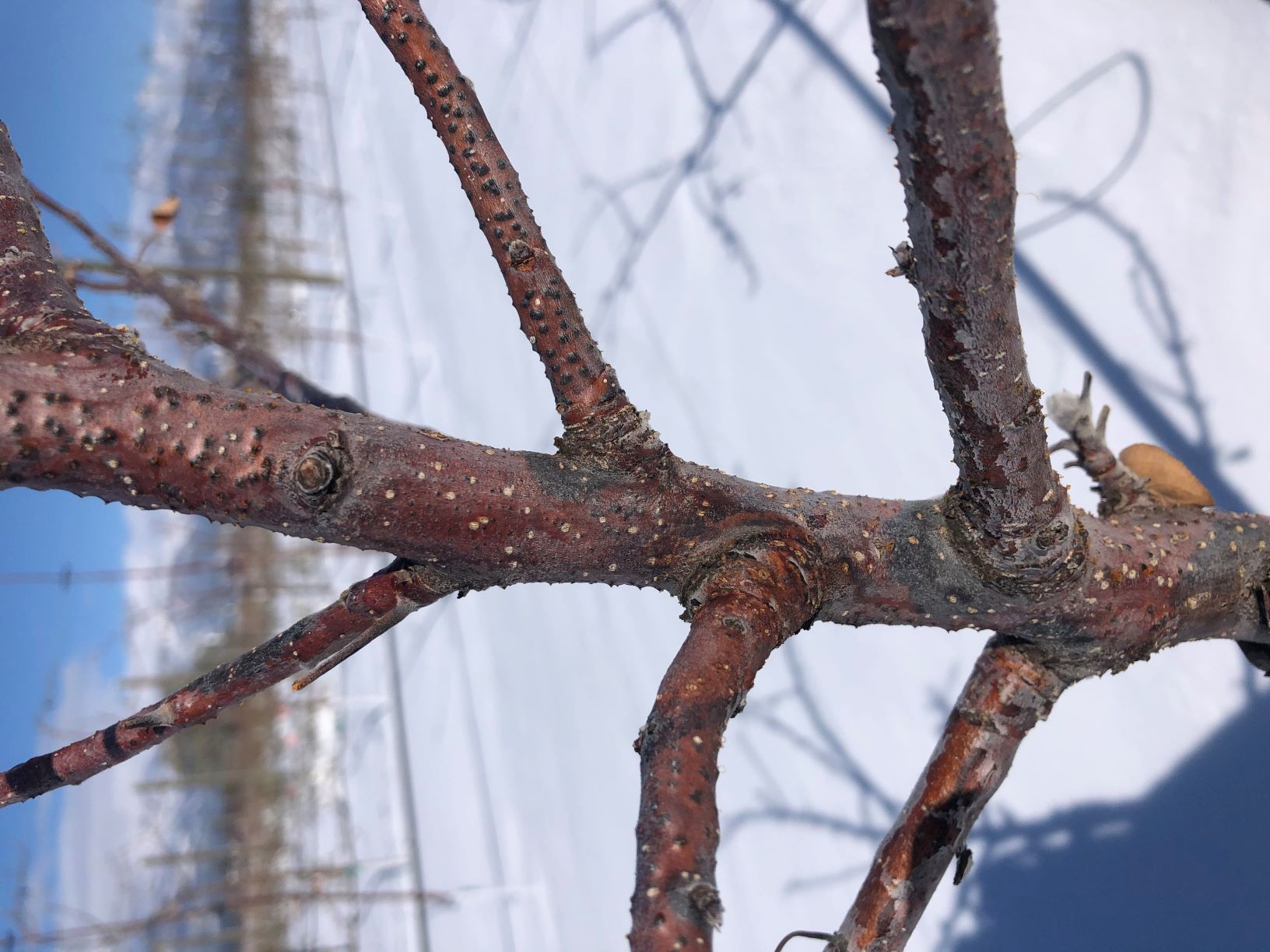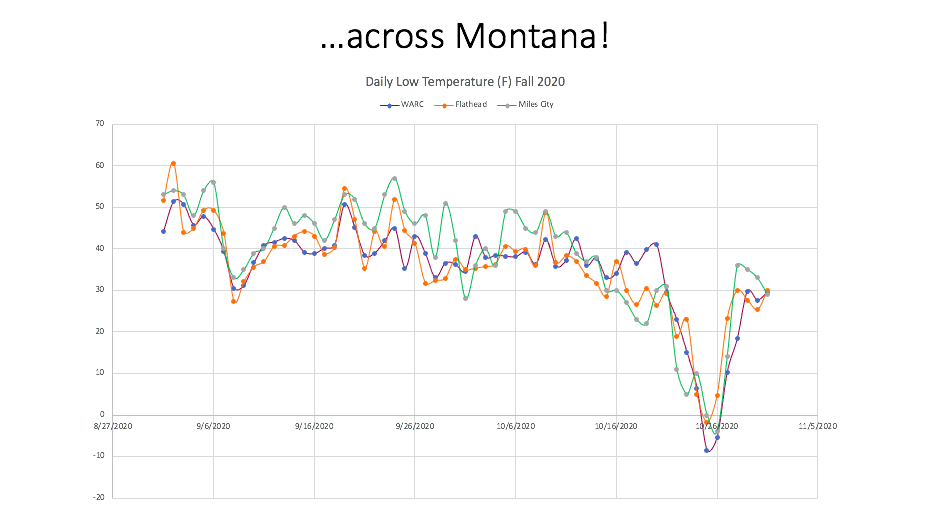Summary of 2020 Cider Apple Cold Injury
 Cytospora canker (darkened areas of stem) experienced after extreme freezing temperatures
Cytospora canker (darkened areas of stem) experienced after extreme freezing temperatures
In 2020, October 24 and October 25 broke a 100-year record for minimum temperatures in the month of October across Montana. This resulted in devastating crop losses at our research orchard in Corvallis as well as for many fruit growers across the state. In spring 2021, we assessed cold injury for apple cultivars at three orchards (Stevensville, Corvallis, and Darby) after trees began breaking bud and damage was evident. Damage was rated as the percent of damaged wood on trees. Tree ages ranged from 1-7 years. Cold injury ranged from minimal dieback at branch tips to extreme dieback down to the graft union. Other observed damage included Cytospora canker—particularly at fruit buds, branch crotches, and on the main stem (pictured above).
While certain cultivars (e.g., Dabinette and Chisel Jersey) were consistently intolerant to extreme cold, older plantings (≥ 5 years) of other cultivars (e.g., Golden Russett, Ashmead’s Kernel) sustained little damage. The Stevensville orchard may have fared better due to the somewhat warmer temperatures experienced at that location. While this event was a record breaker, sudden shifts in temperature particularly in spring and fall are common in Montana, leaving cultivars typically cold hardy when fully dormant susceptible to cold injury as they approach or break dormancy. This information can help growers select cultivars that will survive Montana's erratic climate and avoid planting more tender cultivars in the future.
|
Orchard Location
|
Minimum Temperatures
|
Cultivars with <10% damage a
|
Cultivars with 10-50% damage b
|
Cultivars with >50% damage c
|
Cultivars with dieback to graft union c
|
|---|---|---|---|---|---|
|
Stevensville
|
10/24/20: 12°F
10/25/20: 12°F d 10/26/20: -3°F |
Binet Rouge (5), Hewe's Virginia Crab (7+), Major (3 ), Muscadette de Dieppe (7), Wickson (7), Ashmead's Kernel (6), Bedan (4),
Bulmers Norman (6), Harrison (5), Harry Masters (4), Hudson's Golden Gem (7+), Golden
Russet (7)
|
Kingston Black (3)
|
Chisel Jersey (6)
|
Frequin Rouge (5)
|
|
Corvallis
|
10/24/20: 6°F
10/25/20: -5°F 10/26/20: -5°F |
Binet Rouge (3), Hewe's Virginia Crab (5), Muscadette de Dieppe (3)
|
Harrison Emla 106 (3), Marie Menard (3)
|
Bulmer's Norman (4), Major (3), Harrison G935 (3)
|
Chisel Jersey (3), Dabinette (3), Golden Russet (3), Roxburry Russet (2), Ashmead's
Kernel (2)
|
|
Darby
|
10/24/20: -1°F
10/25/20: -6°F 10/26/20: 6°F |
Hewe's Virginia Crab (9), Tom Putt (7), Muscadette de Dieppe (5), Nehou (7), Wickson (7)
|
Golden Russet (11), Harrison (3), Major (6-8)
|
|
|
a Cultivars listed in bold were undamaged
b Trees are likely to survive
c Trees may need to be replaced
d Weather station report used previous day's minimum temperature
Figure 1. Graph depicting the sudden temperature drop in late October, 2021 in three locations across Montana [Corvallis (WARC), Flathead, and Miles City] where specialty crops like apples and grapes are grown. Many fruit trees—particularly late-ripening cider cultivars—had not yet dropped their leaves when temperatures plunged in late October.

Graph courtesy of Amy Darling, WARC Vineyard Program Manager. Corvallis=Blue and Red line, Flathead=Orange, Miles City=Green.

